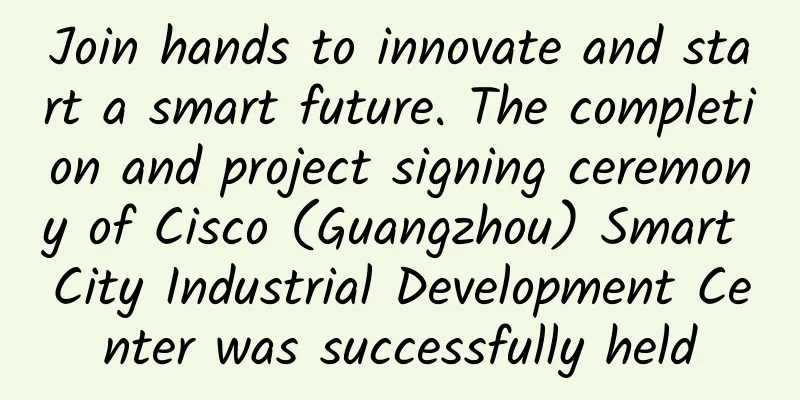Do you really understand API Gateway? This article explains the differences and integration between microservice gateway and enterprise application gateway

|
Software architecture is always evolving and iterating. In the 1990s, C/S architecture was very popular, and business system architecture was also a monolithic architecture. There was very little data interaction between systems. As the number of business systems in an enterprise increased, this would lead to data island problems. At this time, the demand for data interconnection and interoperability was very urgent. Remote transmission protocol formats based on HTTP and XML were widely adopted. The concept of SOA was first proposed by IBM in 2000, and it did solve the integration problems of many heterogeneous systems in enterprises.
In the Internet era, many companies have gradually adopted HTTP and JSON-based architecture styles to adapt to the flexible and ever-changing business needs of business systems. The centralized deployment problems of SOA architecture have been exposed, and microservice-based distributed architecture has become popular. As the core component of microservice architecture, API gateway serves as the unified entrance for all traffic. Upstream business systems do not need to worry about security and flow control, but only need to focus on business implementation. API gateway plays a key role in the overall enterprise architecture. It mainly enhances, guarantees, and controls the calls to backend microservices. It is transparent to all upstream business calls. API gateway needs to ensure that service calls are safe, efficient, and accurate. API gateways are mainly divided into two categories: one is the microservice gateway, which is closer to the business, and the other is the enterprise-level application gateway, which focuses on the flow control and security protection of service calls. The differences between them are mainly in the following aspects: 1. Different deployment locations The microservice gateway is mainly deployed in the intranet as a communication channel for the microservice internal API. Enterprise-level application gateways are generally deployed in the DMZ area or hidden behind a load balancer. 2. Different functional focuses The main functions of the microservice gateway are: service diversion, service automatic discovery and routing, service orchestration, customized development of business rules, service circuit breaking, and service grayscale release. The main functions of the enterprise-level application gateway are: global flow control, unified security authentication, performance support, load balancing, IP blacklist and whitelist, and security protection. 3. Different performance requirements The performance of the microservice gateway only needs to meet the concurrency requirements of the service. The performance of enterprise-level application gateways needs to focus on global traffic and concurrency support. 4. Different usage scenarios Microservice Gateway: Mainly focuses on the gateway call scenarios within microservices. Enterprise-level application gateway: It is mainly the entrance for north-south traffic. WeChat applets, cloud application calls, mobile APP calls, iPad platforms, and third-party partners all call services from the external network to the internal network. 5. Different architecture The microservice gateway is a basic component of the microservice architecture. Most Internet companies use Zuul's open source products. The architecture in the figure below uses Kong, which has better performance and stability, as the API gateway for microservices. The architecture is as follows: The enterprise-level application gateway is mainly a unified entrance for external traffic. It is generally deployed in a centralized manner and is also divided according to region and business field based on customer requirements to form an enterprise-level application gateway cluster. The architecture is as follows: Enterprise-level application gateways generally have very large concurrency, and require the product to be independent, not dependent on third parties, and have good performance. Many Internet-oriented industries choose Kong's open source products. The Kong community is active, with more than 20,000 stars on GitHub. Other products in the API gateway in CNCF are also very good. Domestic products include OpenResty, Orange, and the latest APISIX products, all of which have excellent performance, but stability remains to be verified. There are many products for microservice gateways, which are generally related to business needs and seamlessly integrated with registration service discovery products. The most commonly used products in the industry are Zuul and Spring Cloud Gateway. Since they are pure Java products, their performance is not as good as Kong products, so many Internet companies have carried out secondary transformation, such as games, e-commerce, lottery, etc. In order to meet the needs of high concurrency and large traffic, they will also transform Kong to meet the functions of microservice gateways. In the future, microservice gateways and enterprise-level application gateways will tend to merge, and integrated solutions will also bring many benefits.
There is no silver bullet in the software industry, and no architecture can cure all ills. However, ensuring the high availability and scalability of the API gateway requires more technical investment and technical support at the infrastructure level, so that technical personnel can better focus on realizing the integrated process of automated testing and building, continuous integration and delivery. |
<<: Xinhua Commentary: The "invisible threshold" for number portability should be removed
>>: How to configure basic IPv6 addresses? Learn in one minute
Recommend
This year it accounts for 50%, and next year it is expected to account for 80%, and 5G mobile phones will explode
In the past year since 5G was put into commercial...
Huawei launches Intelligent Body and works with partners to build full-scenario intelligence
[Shanghai, China, September 24, 2020] During HUAW...
RackNerd promotion summary: US VPS annual payment starts from $9.89, US dedicated server quarterly payment starts from $140
RackNerd is a foreign hosting company founded in ...
DogYun New Year's Day promotion: 30% off on Elastic Cloud, 20% off on Classic Cloud, 100 yuan off per month for dedicated servers, 10 yuan free for every 100 yuan recharged
DogYun (狗云) has launched a promotional event duri...
Fiberia.io: $2.9/month KVM-4GB/50GB/2TB/Netherlands data center
Fiberia.io is a new website, from the same compan...
Kurun: $59/year - China Telecom CN2 GIA/China Unicom CUII9929/China Mobile CMIN2 line, 2GB/40GB/500M bandwidth
Kurun was founded in 2019 and is a member of ARIN...
The mature gigabit wireless network industry chain is the cornerstone for the 5G era
Recently, the biggest event of China Unicom after...
Perhaps it is easier to understand HTTPS this way
We won’t talk about HTTP and HTTPS first. Let’s s...
5G CPE replaces fiber-to-the-home, and demand is booming in Europe, America and rural areas
2019 is known as the first year of 5G. In fact, s...
10 pain points: How IT departments face edge computing
From networking and integration to failover, asse...
Job hunting winter Internet companies even outsource architects with a monthly salary of 80,000 yuan
[[251420]] On the one hand, the number of employe...
AT&T uses Frontier's fiber for enterprise sales and 5G
[[427531]] DALLAS – AT&T* will partner with F...
The Ministry of Industry and Information Technology launched a special rectification campaign for the Internet industry: focusing on rectifying issues such as App launching pop-up windows to deceive and mislead users
According to the website of the Ministry of Indus...
NASA is upgrading the Deep Space Network to help advance future space exploration
According to foreign media reports, NASA is upgra...
China Mobile's Sun Tao explains the "5G System Architecture Standard Project": It is crucial to 5G network management and operation
At the 3GPP SA2#118 meeting held in Reno, the Uni...









